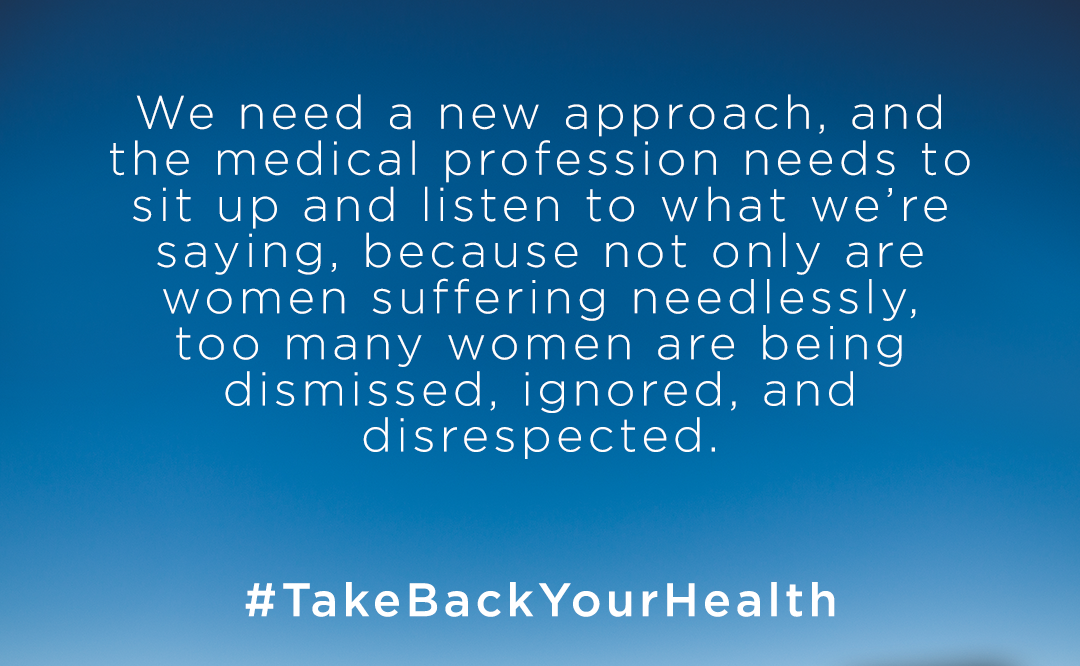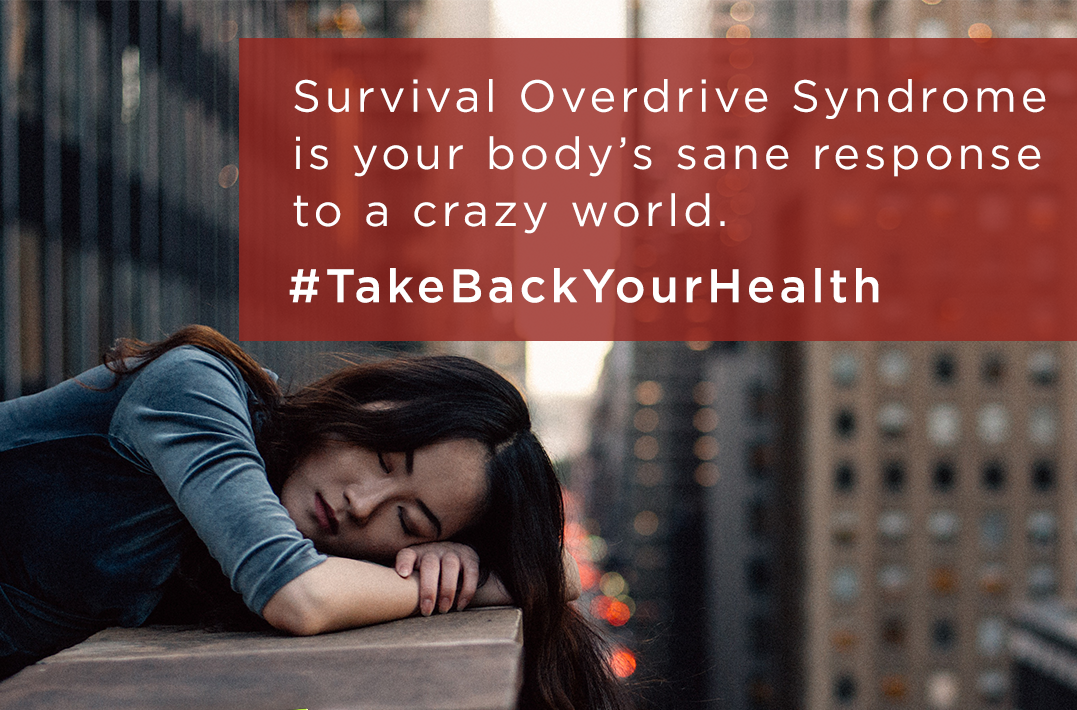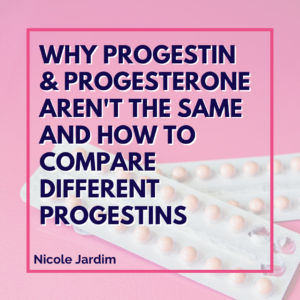Today I’m talking all about adaptogenic herbs. And I am psyched to introduce you to my dear friend Dr. Aviva Romm, a midwife, a Yale-trained MD, a herbalist, mother, grandmother and author.
Basically she’s a genius, but so humble and kind. You know when you meet someone and you just click? Like you are long lost soul sisters who have known each other forever?
Best feeling ever isn’t it?!
This is how I felt when I met Aviva two summers ago. I’ve been following her work for a few years (and am such a fangirl), so of course when we met, I was trying not to do something crazy like burst into tears. Haha! For real though, Aviva is a gem.

Today I am sharing about three powerful adaptogenic herbs described in Aviva’s book, The Adrenal Thyroid Revolution.
So, what’s the problem with women’s health these days?
Okay, seriously. Where do I even begin? Most women today are walking around in a foggy, fatigued, frazzled haze. I see it ALL THE TIME in my line of work.

Crazy period problems, exhaustion, fertility issues, brain fog, a variety of hormonal imbalances, autoimmune conditions – check, check, check.
Millions of women suffer from these seemingly unrelated ailments, bouncing from specialist to specialist, without knowing that these are intrinsically connected symptoms.
Based on Aviva’s decades of experience working with women at all life stages, she’s concluded that we’re living in pure survival mode most of the time. She even coined the term Survival Overdrive Syndrome, in reference to the connection between the chronic overwhelm women feel, and it’s myriad health impacts.

Overloaded by life stresses, toxins in our environment, processed foods, lack of sleep and other imbalances, your body is literally sending out an SOS. Hands up if this sounds like you.
The solution to Survival Overdrive Syndrome
Aviva created a 28-day protocol for eliminating the root causes of SOS, so you can take back your health, and get back to being YOU. She’s actually tried it out on thousands of patients over the years and it totally works.
This plan is laid out beautifully in her book. In it, Aviva teaches you how to Reboot, Reframe, Repair, Recharge and Replenish. After reading through my copy, I can’t tell you how excited I am for you to check it out.
In the meantime, I’m gonna share some really juicy information from the book about some popular adaptogens and how to properly use them to nourish and strengthen your adrenals, so you can fix your runaway stress response.
What are adaptogens?
Adaptogens are a group of herbs that specifically target your hypothalamic pituitary adrenal axis (HPA Axis). They help regulate and heal your stress response by naturally lowering your brain’s perception that you’re in survival mode, while at the same time ramping up your resilience and resistance to stress.
You know what happens when you calm your stress response? So many good things! You’ll normalize your immune system’s responses, improve your brain fog and mood, stabilize your blood sugar, and calm down inflammation, which all assist in resetting your hormones. #winning
(If you think your might be over-stressed, you can take this at home Cortisol Test to measure your adrenal performance and stress. Use code Hormones20 to get 20% off the price of the test.)
Aviva breaks down adaptogens into three categories: calming, stimulating and nourishing. She talks about a number of different adaptogens in her book, but here are three that you should know about.
Adaptogen #1: Ashwagandha
I remember years ago I suggested this amazing herb to a friend who hadn’t had a period in over a year. She was going through a rough time in her life (divorce, job change etc). Within two months of being on this magic herb, she had her period back and it has been a regular visitor ever since! I haven’t seen any specific studies for ashwagandha on Amenorrhea, but clearly it works to help some women’s periods return.
I’ve had many clients use Ashwagandha, and they’ve had equally remarkable results. Most notably, brain fog, fatigue and anxiety have completely disappeared. Lots of women have told me their appetites decrease too.
You can only imagine how much of a positive impact this has on all areas of someone’s life! If you try Ashwagandha please let me know how it goes and what improvements you see.
What is Ashwagandha good for?
There have been over 200 studies done on this restorative herb. Aviva describes this as both a calming and nourishing herb. It’s great for people who have anxiety, nervousness, fatigue, have that tired but wired feeling, have problems falling asleep, and low thyroid function (low T3 or T4). It’s also amazing for people who have joint pain, fibromyalgia, muscle pain, and arthritis.
How to take Ashwagandha
It comes in capsules, loose herbs and tincture, but I’ve found the capsules to be the easiest to use. The recommended dose per Dr. Romm is 3000-6000mg per day in capsule form. It is also recommended to divide it into 2 doses. So if you start at 3000mg, split it into two doses of 1500mg taken with meals. I would also recommend starting even lower to see if it helps you. I like this supplement or this one, and you can take 2 doses a day. If you’re more of a tincture kind of girl, the dosage is 1-4 mL (20 to 80 drops) of tincture in water 3 times a day. Use caution with this herb if you are sensitive to nightshades.
Adaptogen #2: Maca
Ah, mighty Maca! I’ve used this in the past and have recommended it to many clients and friends. Unfortunately for me and for many others I’ve spoken to, I was taking too much and it completely threw my period off. Like, it went from being regular to being 10 days late. Whoops! Lesson: don’t mess with Maca, because it’s powerful!
What is Maca good for?
This South American root gets a LOT of press, and for good reason. It has been used for centuries to balance sex hormones, raise libido and improve fertility, energy, mood and vitality. Honestly, the list of things Maca does seems endless but most importantly it does a darn good job of improving symptoms of low estrogen! Aviva describes Maca as a nourishing herb. There is also a study that suggests maca works for amenorrhea, and even premature ovarian failure by lowering FSH and increasing LH, which is necessary to stimulate ovulation. (1)
Pssst guys, it can also improve sperm count, production and motility!
Best way to take Maca
You want to make sure you get gelatinized Maca which has been cooked – it’s more digestible and better utilized by the body in this form. Cooking also reduces the potential goitrogenic effect of Maca*. Plus it’s also never eaten raw in Peru which is a good indicator of how we should eat it. I recommend Navitas Naturals Organic Gelatinized Maca. It is potent so I recommend starting with 1/2 teaspoon or 2000mg a day to see how it affects you. Remember, not every food or herb is right for everyone so it’s important to pay attention to how you feel when experimenting with something new.
*Goitrogens are compounds that can interfere with thyroid function, especially in people who already have compromised thyroid function.
Adaptogen #3: Shatavari
Aviva refers to Shatavari as the queen of women’s adaptogens. I couldn’t agree more. In ayurvedic medicine, it is said “to give the capacity to have a hundred husbands”! Haha, yes please, sign me up. I have recommended this herb to lots of ladies who are working to improve their menstrual cycle function, libido and fertility, and they’ve reported really positive results.
What is Shatavari good for?
What’s great about this herb is that it’s useful throughout a woman’s reproductive life cycle – from the teen years through menopause. It can be used for the emotional symptoms of PMS, as a fertility tonic, for vaginal dryness (it improves cervical fluid production), low libido, assist in the recovery from childbirth, breast milk production and mood and sleep issues during perimenopause and menopause. A hormonal harmonizing tonic indeed! According to Aviva, this is also considered a nourishing herb.
How to take Shatavari
It’s preferred in tincture, and Dr. Romm recommends you take 2 to 4 mL (40 to 80 drops) of tincture in water 2 to 3 times a day. If you can’t handle the taste of herbs (I have a strong gag reflex, so I understand!), then you can try Shatavari powder (just mix with a little juice) or capsules – 500mg 2-3 times a day with a maximum of 1000-2000mg a day. Please avoid this herb if you have a history of estrogen-receptor-positive cancer.
How to take Adaptogens
- Start on the lowest dosage and if you’re feeling positive results, you can raise the dosage slowly over a few weeks. Finding the goldilocks dose will likely take some time.
- You can’t depend solely on adaptogens to save you from your stressful life, which means you have to do your part to remove the SOS triggers.
- Research suggests that adaptogens work best in stints of 2-12 weeks. According to Aviva, you can take adaptogens for as long as you’re getting benefit. She also suggests that if the benefits wane, you can take a two week break and then restart, or try a different adaptogen.
- Don’t take these herbs if you suspect you are pregnant or at any time during your pregnancy.
Don’t forget to grab Aviva’s book today!
Reference
- https://www.ncbi.nlm.nih.gov/pubmed/23674952




4 thoughts on “Adaptogenic Herbs for Women’s Hormonal Health”
I love adaptogens and have been taking them since they were introduced to the US. Then company brand I use is Kare-N-Herbs. They are the best!! Also the first to bring Rhodiola rosea into the US. Love your information and I am looking into your book.
Thank you!!!
Hi. Interesting read. Became interested in herbs 3 yrs ago. I felt good but a tired and water retention in legs. In my early 50’s post menopausal since late 20’s. Did HRT, and transdermal hormones. Wanted off so stopped tri-est but continued progesterone cream. Stopped that too. Did saliva tests and blood work.
Have tried adaptogenic formulas and at first it cha ged my life. Water retension gone, first time in 20 yrs, hair beautiful, skin awesome. Im thin but had fatty tummy after trying maca. That slimmed down. It was great.
I stopped formula, and in months tried a different one. Second bottle body changing. Not good.
Everything i try now makes me fat, water retention and now Ive lost so much hair it’s scary. Its like everything decreases any estrodial I might be producing naturally. You name an adaptogen, I’ve tred it.
Now Im using essential oils like frankinsense, myrh, Green tea, saw palmetto, I do yoga, and eat pretty well. Grrrrr. I once was a 5’4”, skinny, brunette to a balding, water bag. These herbs really did a number on me and my body is not responding to returning itself to where at least it was before, now that Ive stopped herbs.
Should I go back to hormones? Need to turn off these androgenc symptoms.
My mother had her thyroid removed and now takes medication every day. She has chronic fatigue and I know adaptogens can be very good at helping fight CFS however, I know some adaptogens are not suitable for thyroid problems. Do you have any suggestions for which can and can’t be used in her situation?
Hi. When I started to read about macan, I realised that I have the same issues lately and after I read this I thought could be the reason..the thing is maca gives me good energy during the day but casualty since I started taking it , me period change to very late dates… is there any specific reason coz maca as an adaptogenic should help to hormonal balance, at least the yellow one?? Thanks.